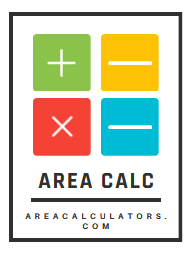Ever wondered how well your reverse osmosis (RO) system is performing? Whether it’s a household filter or an industrial-grade unit, efficiency matters. It tells you how much water is being purified — and how much is going to waste.
The RO Efficiency Calculator gives you a clear percentage showing how effective your RO system is at converting feed water into clean, usable output. No technical headaches. Just straightforward insights.
What Is RO Efficiency and Why It Matters?
Reverse osmosis systems work by forcing water through a membrane that blocks impurities. But not all the water gets cleaned — some is lost as reject water (waste).
RO efficiency measures how much of the incoming (feed) water ends up as clean (permeate) water. A high percentage means your system is working efficiently. A low one could point to maintenance needs, system faults, or poor design.
Understanding RO efficiency helps you:
-
🌊 Monitor water usage
-
🔧 Detect system inefficiency early
-
🏡 Manage household or lab filtration
-
💰 Reduce water bills and operational costs
-
🌱 Promote sustainable water use
Formula and Variables
The formula is as simple as it gets:
🧮 RO Efficiency (%) = (Permeate Flow ÷ Feed Flow) × 100
📊 Variable Table
| Variable | Meaning |
|---|---|
| Permeate Flow | Amount of clean water produced (L/min) |
| Feed Flow | Total input water entering the system |
| RO Efficiency | Percentage of feed water purified |
Reject Flow = Feed Flow – Permeate Flow (just FYI, not used in this formula directly)
Example: Calculating RO Efficiency
Say your RO system has:
-
Feed Flow: 10 liters per minute
-
Permeate Flow: 6 liters per minute
Apply the formula:
Efficiency = (6 ÷ 10) × 100 = 60%
That means 60% of the water is being purified. The rest (40%) is rejected.
How to Use the Calculator
-
Measure your feed flow rate
Use a flow meter or read from the system specs. -
Measure your permeate flow
This is the clean water output rate. -
Input both values
Make sure both are in the same unit (e.g., liters per minute) -
Get your RO efficiency result
The calculator shows your efficiency as a percentage.
Easy to use — helpful to know.
Where This Calculator Is Used
🚿 Home RO systems – track if your filter’s working well
🏭 Industrial filtration – monitor large-scale purification
🧪 Lab water systems – ensure clean water for experiments
🚰 Commercial kitchens – control water quality and cost
🌿 Sustainable design – optimize water usage in eco-friendly buildings
🔬 Medical facilities – guarantee clean water for devices and sterilization
Anywhere RO systems operate, this tool gives clarity.
Tips for Best Results
✅ Use recent measurements — not estimated values
✅ Match units (liters per minute, gallons per hour, etc.)
✅ Avoid measuring during start-up or flushing cycles
✅ Repeat measurements at different times for consistency
✅ Maintain your system — filters and membranes matter
Small input errors can mislead performance checks.
Common Mistakes to Avoid
❌ Using total water produced instead of flow rate
❌ Mixing units (e.g., gallons and liters)
❌ Measuring only one output stream
❌ Ignoring partial clogs or scaling inside the membrane
❌ Assuming efficiency stays constant over time
Keep data real and updated for accurate tracking.
FAQs:
1. What is a good RO efficiency percentage?
Most home systems range between 20% and 50%, while some modern systems reach 60% or more. Higher is better.
2. How do I increase my RO system’s efficiency?
Regularly change filters, clean the membrane, maintain pressure, and avoid clogging.
3. Does high pressure improve RO efficiency?
Yes, up to a limit. Too much pressure can damage components, but moderate increases often help.
4. Can this be used for seawater desalination RO plants?
Yes — as long as you know the input and clean output flow rates.
5. Why does my system waste so much water?
That’s typical in low-end units. Upgrading components and maintenance can reduce waste.
6. Does water temperature affect efficiency?
Absolutely. Warmer water flows easier through membranes, slightly improving efficiency.
Conclusion:
The RO Efficiency Calculator helps you see how effectively your reverse osmosis system is turning feed water into clean, usable output.
Whether you're purifying drinking water at home or managing industrial filtration, understanding efficiency leads to better maintenance, lower costs, and sustainable usage.
Simple inputs. Powerful insight. Clean water — with clarity.
